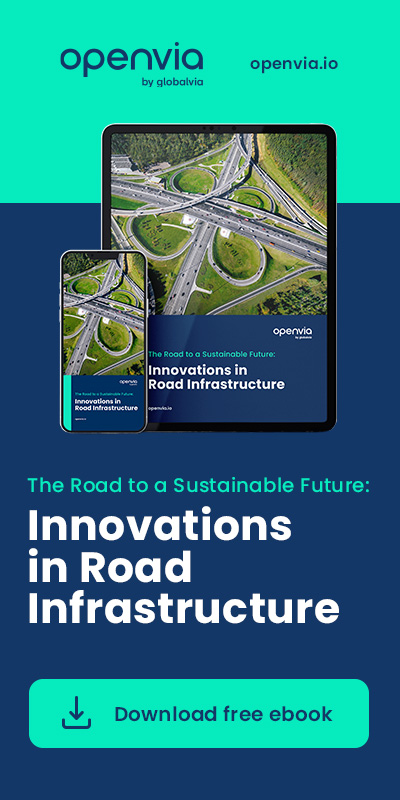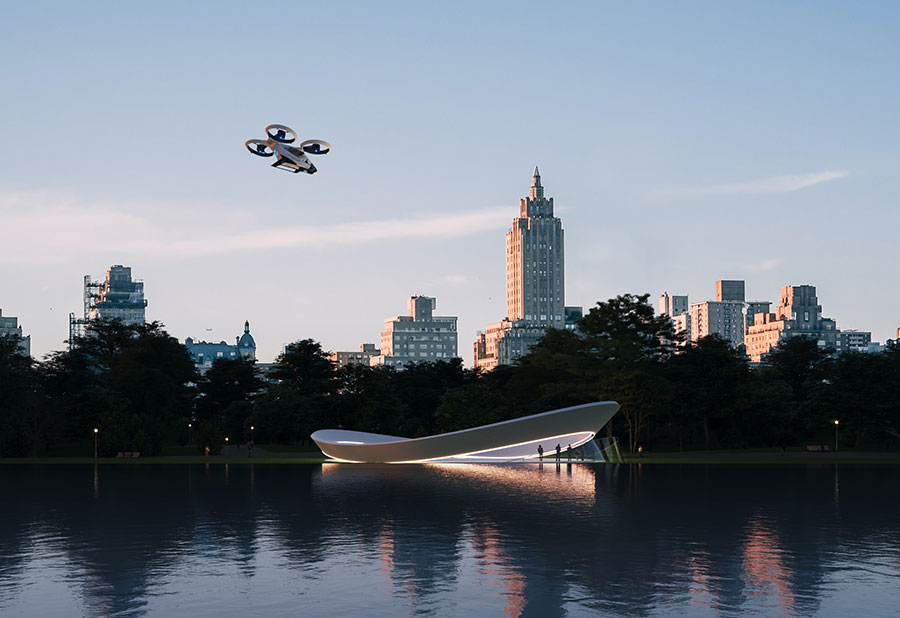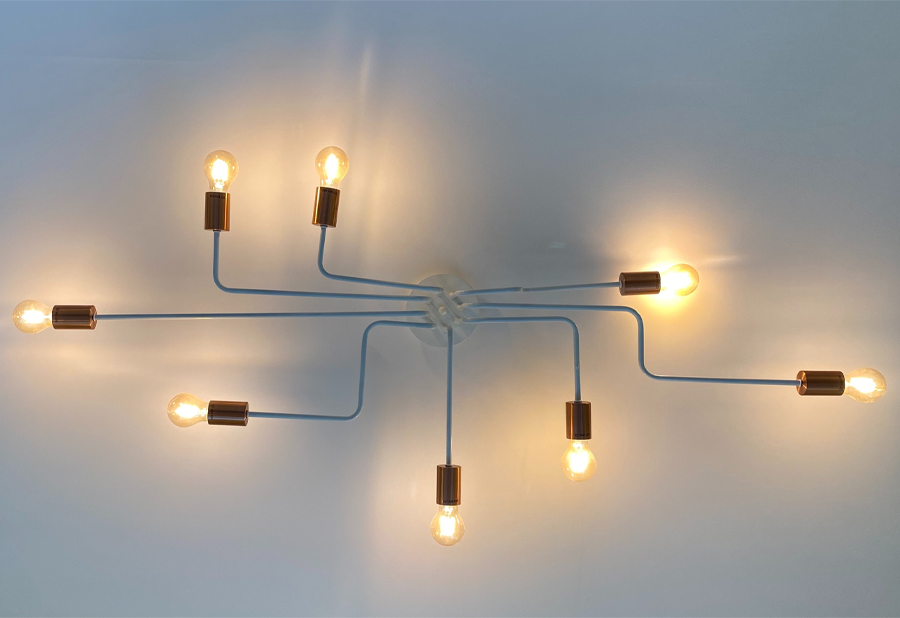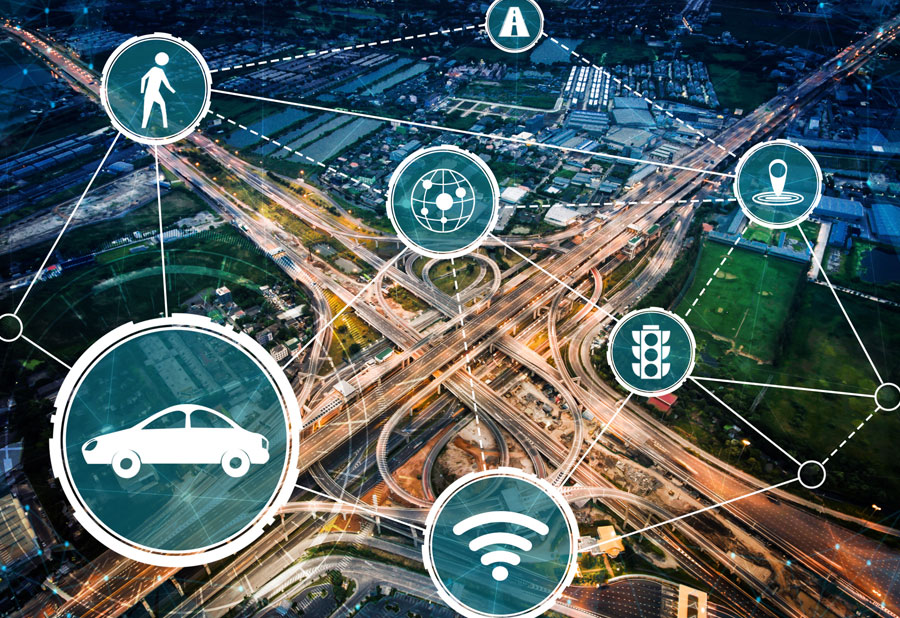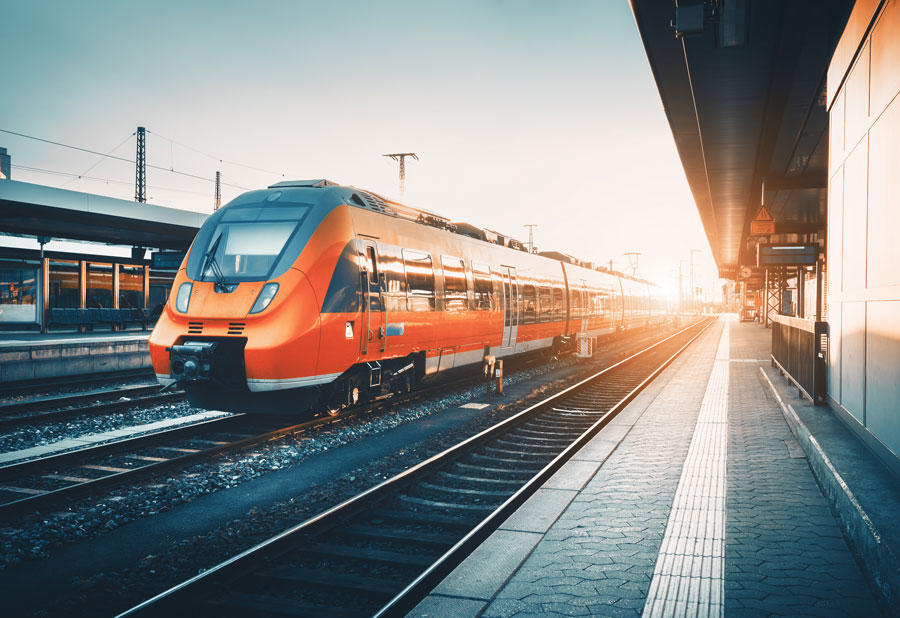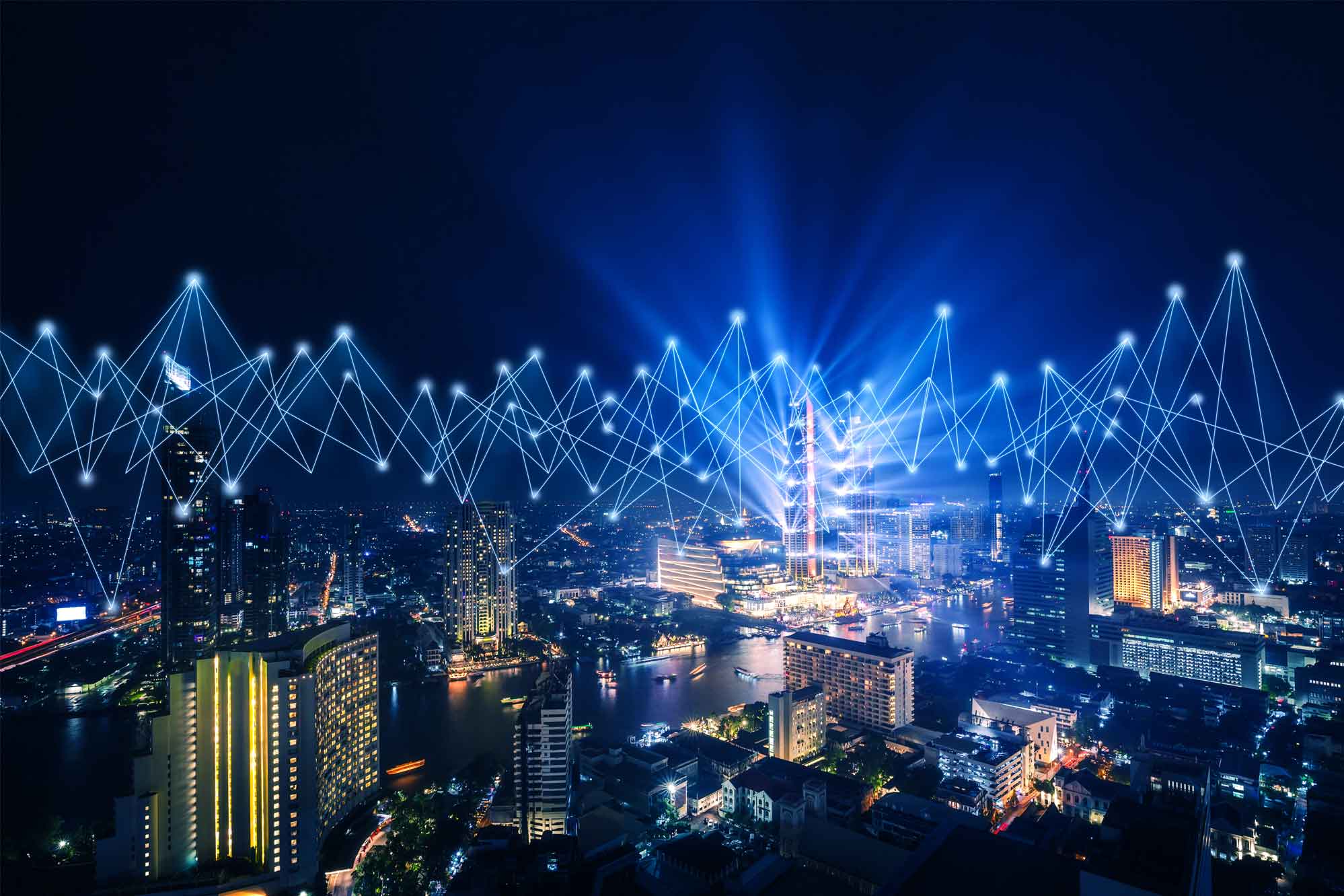In the world of cinema, it is very common to see that in the cities of the future, the mobility and circulation of vehicles is based on flying cars. Roads become aerial in futuristic cities, but that future is already here with technological innovations in aerial mobility based, for example, on the use of drones.
We start from the assumption that drones are robots or aerial devices and one of the means of transportation currently available in urban aerial mobility (UAM). Within the wide range of drones and their uses, there are solutions such as the eVTOL vehicles(Electrical Vertical Take Off and Landing) vehicles, focused on passenger transport, whether piloted on board or remotely or even self-piloted.
From Openvia, as experts in technological innovations in mobility (including aerial mobility), we are going to describe the advantages of the use of drones and their role in aerial mobility in cities.
What are drones?
Drones are unmanned aerial vehicles (UAVs) that allow autonomous flights controlled from a ground control center (GCS). These vehicles are equipped with communications, sensor or global positioning systems or GNSS (e.g. Galileo and GPS) and their use is civil, commercial or military.
In fact, it should be remembered that many advances or innovations that reach civilian use have a military or scientific origin: the origin of the Internet is the development of a communication network using the TCP/IP protocol in the Arpanet network of the United States Department of Defense (DoD).
Its use, thanks to the incorporation of sensors and cameras, makes it possible to collect data and view in real time the images provided by the drone during its flight, and even process them in real time on board. Currently, there are several examples of its professional use, such as the monitoring of the General Directorate of Traffic (DGT) of the circulation of vehicles from the air as a complement to the use of helicopters.
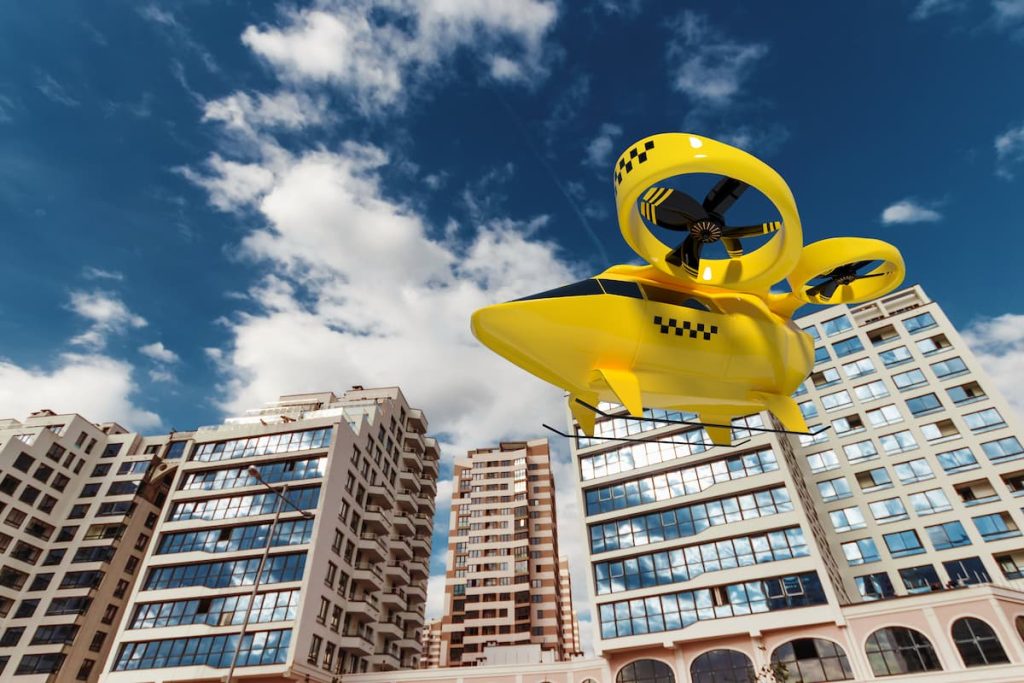
Uses and applications of drones in aerial mobility
However, beyond the use of drones for governmental, military or even cinematographic purposes, how do they improve aerial mobility? We are going to describe their various applications, but bearing in mind that there are restrictions for safety reasons.
In this regard, as stipulated in Royal Decree 1036/2017, of December 15, and Community regulations (Delegated Regulation (EU) 2019/945 and Implementing Regulation (EU) 2019/947 of the European Commission) promoted by EASA (European Aviation Safety Agency), both the requirements for handling drones and prohibition of their use within 8 kilometers of airports, aerodromes or controlled airspaces are regulated. Except for exceptional permits granted by the authorities or application of standard scenarios for flight in urban environment (STS-01) and without direct vision (STS-02), drones must always be flown in open category, under the visual range of the pilot and never at a height higher than 120 meters in flight.
Do you want to know more about Mobility and Sustainability?
Use of drones for freight shipments
We start with the use of drones for shipments of goods or products by companies. This measure, in fact, is already being carried out by companies such as Amazon. The aerial transport of goods with these unmanned vehicles is an advantage to decongest traffic in cities and reduce emissions of polluting gases into the atmosphere.
It is clear that their use is not suitable for all companies, but depending on the economic and technological capacity of a company, drones can be very useful for shipping goods and orders and other repetitive tasks that can be optimized.
They are not only useful in cities, where cars or vans can reach, but also in more isolated areas where vehicles have difficult access and where a drone can send the goods (we must also consider the possibilities in emergencies in places where natural disasters occur and medicine, clothing or food must be sent to save lives).
Of course, this technology is not yet mature, it involves an economic management that must be profitable for companies, it has its risks if there are failures in the control and operation of drones, and it is necessary to continue advancing both in safety and in legislation at the same pace as technology advances.
Drones for traffic control on roads and in cities
As we have mentioned before, drones are an indispensable complement or even a substitute for helicopters for traffic control on roads and cities by the General Directorate of Traffic. With a drone, the Guardia Civil de Tráfico can monitor and control the circulation of vehicles and report in real time on aspects such as:
- Traffic accidents by sending warnings or alerts from the drone.
- Traffic density for real-time traffic jams.
- Surveillance of the circulation of cars on stretches where accidents often occur or where traffic infractions are committed.
And why using drones is an advantage in this sense? For security reasons, because they are unmanned aircraft and avoid risks for the agents. But also because they are more maneuverable and even go more unnoticed than a helicopter.
And as its technology is efficiently applicable in real time for surveillance and traffic control tasks on roads and in cities or for inspection of critical infrastructures, perimeter surveillance, fire or spill detection, etc., it is an alternative that is expected to have more use in the coming years. This is also possible thanks to the technological advancement of different sensors (e.g. LIDAR, multispectral camera, telephoto lens, thermography, etc.) and 5G communications that allow higher bandwidth and lower latency, enabling the sending of high-definition video in real time.
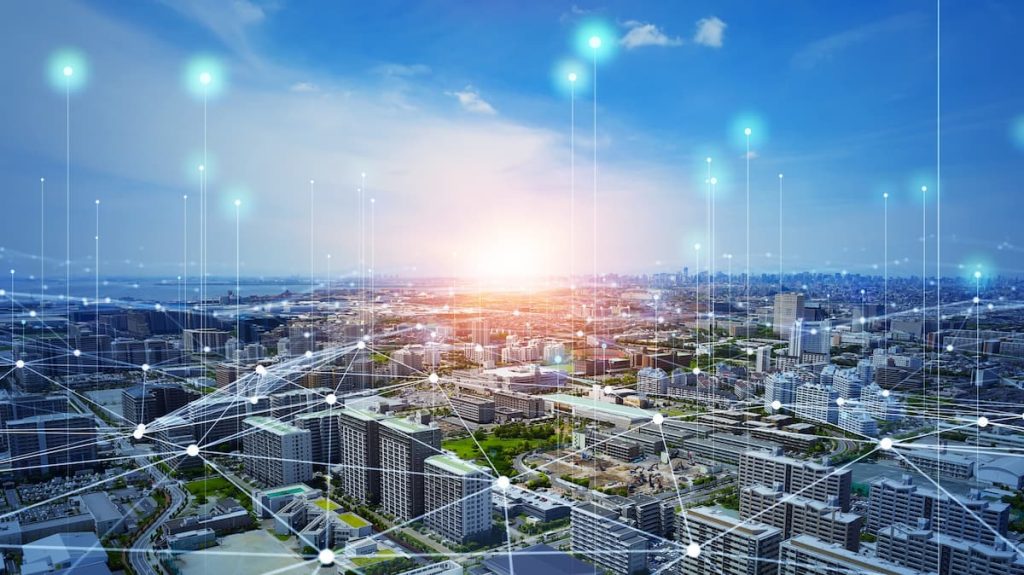
Advantages of drones in aerial mobility
After knowing some of the most common applications and uses of drones in mobility, it is time to mention their main benefits and advantages. In a summarized way, we can highlight the following:
- Reduction of pollution and CO2 emissions by reducing the number of vehicles on the roads and using electric drones.
- More places are reached than with regular transport by activating 3D routes by air, including isolated areas when natural disasters occur or in adverse weather conditions, such as the Filomena squall that hit Spain in January 2021.
- Reduced maintenance costs compared to transport fleets as the vehicles use easily interchangeable electric motors and batteries.
Future forecasts for drones in aerial mobility
In this article we have described some of the most important uses of drones and their role in urban area mobility, as well as their most important advantages. The future will tell if this technology expands and becomes commonplace and not just an optimistic forecast.
For that to happen, it will have to be a safe and economical technology for its use, so the reduction of costs in its manufacturing process, affordable prices for its purchase and a clear regulation are essential. In this sense, it is necessary to make a simile or comparison with the air traffic of airplanes: there can be no flights without rules and control measures to avoid accidents and falls of drones that may pose a risk to people’s lives.
Therefore, the expansion of the use of urban drones will be beneficial to achieve the goal of having a sustainable and safe mobility in cities. This is only possible with the economic, legislative and technological impulse of all the actors involved: from technology companies and startups like Openvia – innovative experts that launch urban mobility solutions in the market – to public administrations. That is our goal: the development of technological innovations that make society move forward in a digitalization process that must be safe, sustainable, respectful of citizens’ privacy and democratic.
